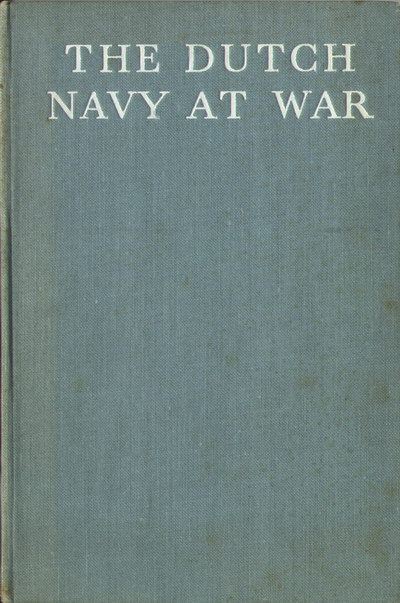![]()
The Dutch Navy At War
![]()
 |
Title | The Dutch Navy At War |
| Rating |  |
|
| Author | Luitenant-ter-zee 1e Klasse A. Kroese | |
| Publisher | George Allen and Unwin Ltd, London | |
| Year first published | 1945 | |
| Series | - | |
| Binding | Hardcover | |
| Content | 131 pages |
|
Having read the title information above, you now know almost all you need to know about this book -- a wartime summary of Dutch naval actions written by a Dutch naval officer.
The one surprise in The Dutch Navy at War is its scope.
The German invasion of Holland huddles tightly within the first fifteen pages.
The bulk of the text --eighty pages-- goes to describing the Far East scenario and the eventual destruction of Allied naval forces there.
In this regard, the book might better be titled "The Dutch Navy in Defeat" as the author explains how the fleet did everything possible to resist the enemy, facing insurmountable odds with unwavering bravery.
Kroese clearly has his eye on pre-establishing the credibility of the Netherlands' post war naval resurrection, especially in the context of the East Indies colonies.
("For the Netherlands it is a question of 'to be or not to be'; they must at all costs remain a Pacific Power worthy of respect.") Rather than following the subsequent actions of Dutch forces -- Kroese ignores ships like Isaac Sweers continuing the war in the European theatre, and Dutch submarines barely earn a mention -- the book then turns to a most interesting chapter titled "The Task of the Allies in the Pacific." Here we see the author's strategic vision for completion of Allied victory against Japan, and his view shook me out of my hindsight. He depicts the Asian mainland as the decisive front and scoffs at theories of victory through blockade; it seems he has no familiarity with America's submarine campaign and no sympathy with America’s War Plan Orange. Pinpointing the date of this writing is tricky; Kroese refers to the capture of Kwajalein but not to the grand events of June 1944. The book draws to a close with a romantic narrative of Princess Juliana's withdrawal to Canada on board Sumatra. The sincere emotionality is both awkward and touching. ("Princess Juliana addresses the company in a clear voice, and it seems as if Nature, too, holds its breath to listen to her words.") The chapter concludes with an unintended irony as the Princess promises a token of thanks to Sumatra for its careful service and the crew asks only for permission to bring her back to a liberated Holland --with no inkling of the coming D-Day and Sumatra’s Gooseberry fate. Unfortunately, the book comes without an index, but there is an appendix providing the chronology of Pacific war events from December 1941 into March 1942, plus a fold-out map showing a best-guess track chart of Java Sea. The book′s brevity allows for little depth of detail, though I was pleased to find occasional tidbits that rarely shoulder their way into English-language histories (for example, a mention of old Z.5′s role in opposing German seizure of the Maas bridges). If you approach The Dutch Navy at War expecting a comprehensive account and dispassionate analysis, you will be disappointed. Instead it provides an intriguing wartime perspective: looking back at the gallant but futile opposition to Axis aggression, examining the then-current strategic situation, and foreseeing a post war abundant with colonial bliss. Review by Richard Worth, May, 2004. This review was first published on the website www.dutchsbmarines.com (no longer existent). |
![]()
| Back | Home |